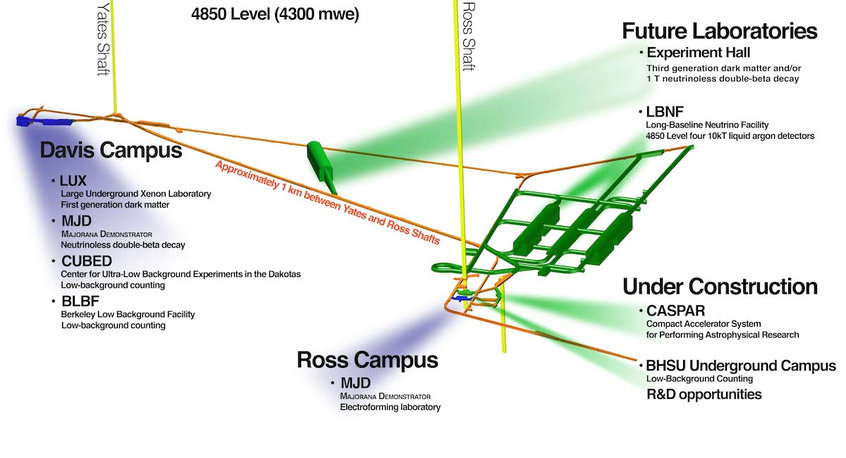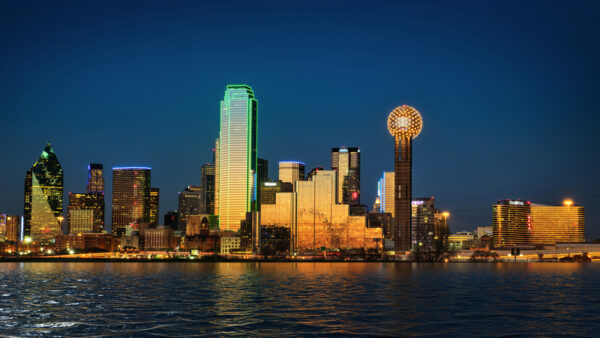Work has begun on one of the biggest scientific installations in US history, the $1.5bn Long-Baseline Neutrino Facility (LBNF), located a mile beneath the cornfields of South Dakota.
Intended to probe fundamental questions in particle physics, the LBNF is part of an experimental apparatus known as Deep Underground Neutrino Experiment (DUNE), which will collect a high intensity beam of neutrinos fired off by another installation at the Fermilab 1,300km away in Illinois.
Neutrinos can pass through the earth because they have almost no mass and no electrical charge.
The LBNF consists of two detectors, a “near” one located in a cavern 60m below the surface of the Sanford Laboratory and a “far” one about 1.5km down.
The far detector will consist of four caverns, each housing a freezer, called a cryostat. And each of the cryostats will contain a reservoir of 17,000 tonnes of liquid argon. This will the “target” for Fermilab’s neutrino beam. A fifth cavern will contain the machinery to maintain the -190°C temperature and the pumps needed to circulate the argon.

The layout of the “far” detector (Fermilab)
The experiment was originally to be funded by the US Department of Energy and the National Science Foundation, however the foundation pulled out in 2010 because it believed the facility was too large an undertaking for it.
In May 2014 it became an international project, with the participation of about 30 countries, as well as the EU’s Cern facility in Switzerland, which has the job of building the prototype detectors.
When complete, in about 2027, the experiment will be overseen by about 1,000 scientists and will run for about 20 years.
The aim of the experiment is to try to gain a better understanding of the neutrino, and as a result to understand why the universe is made of matter rather than antimatter and the nature of proton decay and its role in a grand unified theory. It will also try to detect neutrinos fired off by black holes, thereby allowing scientists an insight into how they are formed.

The design of the experiment (Fermilab)
A YouTube video explaining the physics of the detector can be seen here.
Fabiola Gianotti, the director-general of Cern, commented: “Some of the open questions in fundamental physics today are related to extremely fascinating and elusive particles called neutrinos. The LBNF brings together the international particle physics community to explore some of the most interesting properties of neutrinos.”
Top image: Scientists and politicians wield symbolic spades in South Dakota (Fermilab)
Further Reading:
Comments
Comments are closed.











As we approach a Grand Solar Minimum that is already causing major reductions in agricultural production worldwide that will only get worse, government’s decide it’s a priority is to spend $1.5 Bn on a toy for the curious. Have lunatics truly taken over the asylum?